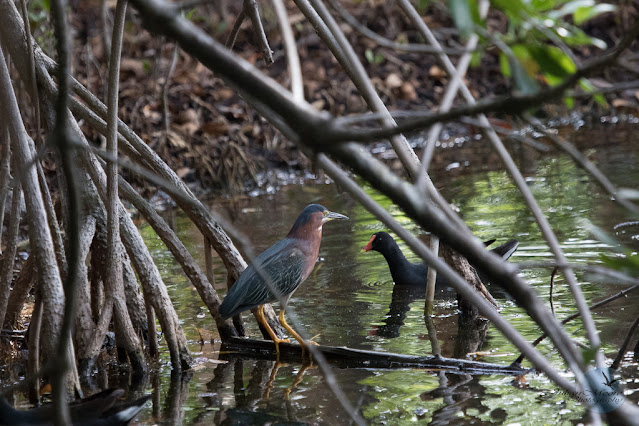Global Big Day 2025 was a fantastic experience birding with the family! It was wonderful to reunite The Moore Birders, our family birding team, for the first time since COVID. We were all eager to see as many birds as possible on World Migratory Bird Day, May 10th.
The night before, we held a team meeting to strategize. We assigned tasks to ensure smooth transitions between locations and to guarantee we identified and accurately recorded every bird on our list in our eBird trip report (www.ebird.org). Our plan was to start early, hitting our first birding spot by 5:15 AM, with a highly anticipated visit to a special location scheduled for 6:00 AM. The excitement was palpable!
05:00
The house is quiet, with everyone asleep! What a way to start the day. We were up and moving by 5:15 AM, with my wife preparing breakfast and lunch for us to take along. I decided to head to our first stop, the pond at SBRC, just a short five-minute drive away. My target birds were the Black-crowned Nightheron (Nycticorax nycticorax) and the rare Striated Heron (Butorides striata). While getting ready to leave home, I managed to log my first six species of the day, all common birds found around the house. I then drove to the SBRC Pond at Mangrove, St. Thomas, where I added four more species, including one of my targets - the Black-crowned Night Heron. I saw six of them, of various ages, in the water lettuce-filled pond, but there was no sign of the Striated Heron. By the time we were all on the road, we had already tallied ten species! Unfortunately, we were now running late for our 6:00 AM appointment, so I called ahead to apologize. Due to our late start and the appointment, we decided to skip two other locations.
The New Graeme Hall Nature Sanctuary
 |
| The Famous Egrets Island at Graeme Hall Nature Sanctuary |
Our appointment was at the Graeme Hall Nature Sanctuary, thanks to the management allowing me and my team to do the first World Migratory Bird Day count at this Important Birding Area (IBA), RAMSAR site, the first time in nearly twenty years. I was given a tour while it was being worked on, and was excited to see it close to completion and preparing for it grand opening on May 30th. While we were excited, we didn't forget our task, even though it was difficult keeping everyone from being distracted by all the purposeful distractions that would tantalize while educating the guests to this iconic facility. Our main targets were the less common of the two nightherons on the island - the Yellow-crowned Night Heron (Nyctanassa violacea), and the Orange-winged Parrot (Amazona amazonica), both were seen. We spent about one and a half hours at Graeme Hall and added fifteen species. The reopening of the Graeme Hall Nature Sanctuary will be a welcome occasion for locals and visitors alike and will have something for all. I will post on our sister blog, Bird of Barbados, on a later date, but a special thanks to Mr. Da Silva and Mr. Graham Cumberbatch. South Coast
 |
| Whimbrel @ Chancery Lane - Year-bird |
After leaving GHNS, we made a series of stops along the south coast: Oistins, Silver Rock, Inch Marlow, and finally Chancery Lane. This route added another nine species to our tally, including my first of two "year birds," a Whimbrel (Numenius phaeopus), which we spotted during our stop at Chancery Lane in Christ Church. Unfortunately, we missed a few species that were on our list, namely the Roseate Tern (Sterna dougallii) and Common Tern (Sterna hirundo) at Oistins, and the Sanderling (Calidris alba) at Inch Marlow. Following our stop at Chancery Lane, we headed inland to several private locations in and around the parish of St. Philip.In and Around St. Philip
 |
| Black-necked Stilt at a wetland in St. Philip |
Our first stop was Woodbourne Shorebird Refuge (WSR), which was surprisingly dry. However, I was pleased to find over fifty Zenaida Doves (Zenaida aurita) feeding in one of the dry areas. Even better, we spotted a single Eared Dove (Zenaida auriculata) among them, adding another species to our day's count. After leaving WSR, we stopped at two private locations, where we added a few more species, including the rare Black-necked Stilt (Himantopus mexicanus). By this point, we were well past our scheduled breakfast time, so we opted for brunch instead.At this break, we had reached a total of 43 species (see the full list here). In Part Two, we'll begin our journey north.
Images from GBD2025





















